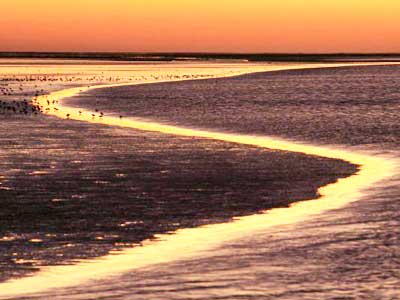An estuary is a body of water partially surrounded by land, where fresh water from a river mixes with ocean water.
Estuary habitats include salt marshes, mangroves, seagrasses, coastal forests and beaches.
Estuaries may form under a number of circumstances: at drowned river mouths, within steep glacially eroded fjords, within barrier islands or a barrier spit parallel to the coast, or within coastal indentations formed by faulting or local subsidence.

Tides define estuaries. Estuaries are washed either daily or twice daily with seawater. At high tide the salinity of the estuary will rise as sea water (20-35 parts per thousand of salt dissolved in the water) enters the estuary mixing with freshwater (0-0.5 parts per thousand) coming downstream. Estuary salinity can thus vary from 0-35 parts per thousand depending on the tide and amount of freshwater input.
Read more

